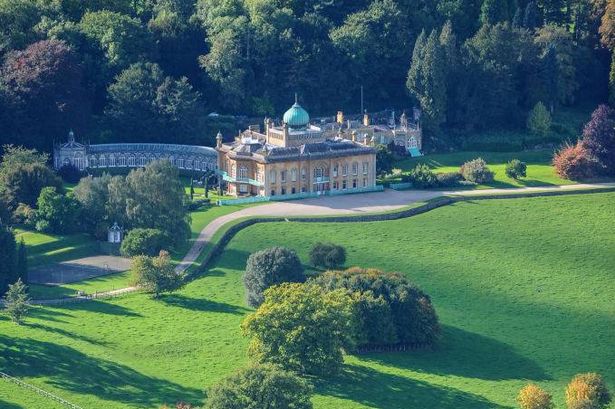The stunning Mughal Indian-style building built in 1805 offers guests a slice of India — right in the heart of Gloucestershire’s picturesque Cotswolds countryside
What if we told you that a 200-year-old Indian-style palace, reminiscent of the Taj Mahal, is tucked away in the heart of Gloucestershire?
While the Cotswolds are typically associated with charming cottages, chocolate-box homes, and honey-hued mansions that seem frozen in time, nestled in the idyllic Cotswolds countryside — Sezincote House and its estate offer a taste of India just outside Moreton-in-Marsh.
This traditional family-run estate spans approximately 3,500 acres of undulating countryside, complete with waterfalls, canals, grottoes, and temples. The house and garden welcome visitors at specific times throughout the year, and the unique location hosts six weddings each summer in its breathtaking grounds.
Perched roughly 600 feet above sea level in the North Cotswolds, Sezincote House remains privately owned and operates a thriving agricultural estate. This provides resources to support both the intricate rural life in the region and the maintenance of the house. A brother-sister team manage the home and the estate, with assistance from the older generation and keen interest from the younger ones.
Operating in line with traditional English practices, the estate boasts a mixed farming enterprise, ensuring proper fencing and permanent grassland. This is complemented by woodlands that provide an ideal habitat for local wildlife and a source of timber, reports Gloucestershire Live.
However, Sezincote House is far from ‘traditionally English’. Designed by Samuel Pepys Cockerell, this historic edifice was built in 1805 and stands as a stellar example of Neo-Mughal architecture, offering a 19th-century take on 16th and 17th century Mughal design.
John Cockerell initially purchased the vast country estate as a display of his wealth. However, it was his brother Charles Cockerell who truly transformed the property after inheriting it three years later following John’s demise.
Charles then sought the expertise of his architect brother Samuel and artist Thomas Daniell, renowned for his sketches of Indian properties, to design a house inspired by a fusion of Hindu and Muslim architecture — something he had seen plenty of during his travels.
Samuel had previously experimented with subtle Indian features at Daylesford House in the Cotswolds, but he fully embraced the style at Sezincote, incorporating peacock-tail windows, jali-work railings, and pavilions. George IV, while still Prince Regent, visited Sezincote and is said to have been so smitten with the design that he instructed his architects to incorporate similar elements into the Brighton Pavilion that was being built for him.
The grand building has the red sandstone look that’s typical of Mughal architecture and instead of the famed white marble (as seen in the likes of popular structures like the Taj Mahal), this building features a large copper-covered, onion-shaped dome instead.
The home’s fenestration features a series of oversized windows crowned with arch-shaped tops. However, these arches depart from conventional forms, taking the shape of shell-like fans that reveal a distinctly Mughal influence. In contrast, the interior design adheres more closely to European stylistic traditions.
The estate’s landscape, designed by Humphry Repton, reflects a Renaissance-style garden interwoven with elements of Hindu architecture – most notably expressed through the crescent bridge supported by intricate columns. Minarets and a temple dedicated to Surya, the Hindu Sun God, also lend to its Indian heritage and influence. A Persian Garden of Paradise adds to its breathtaking charm.
While Sezincote Garden continues to welcome visitors on Wednesdays, Thursdays, and Fridays between October and November, both the Sezincote House and the Orangery Tearoom have shut their doors for the season, with plans to reopen in 2026.
Entry to the Sezincote Garden will set adults back by £9, while children aged 16 and under can get in for £3. A visit to the Sezincote House, which includes a house tour and garden entry, is priced at £15 for adults and £9 for children aged 16 and under.
